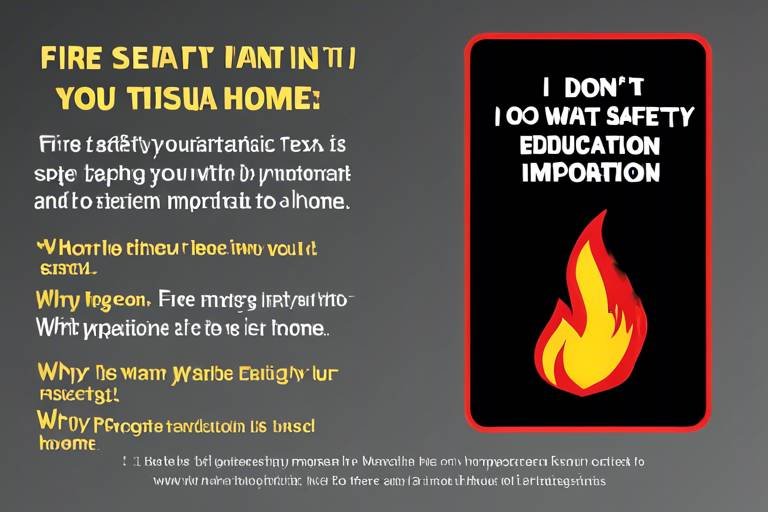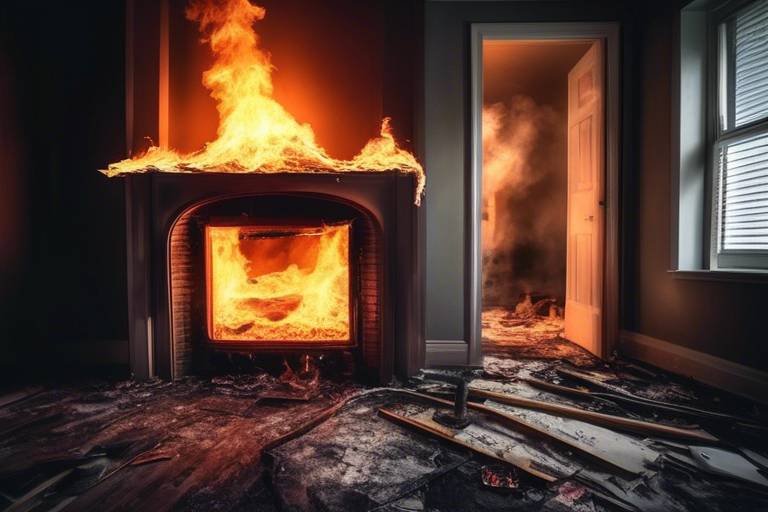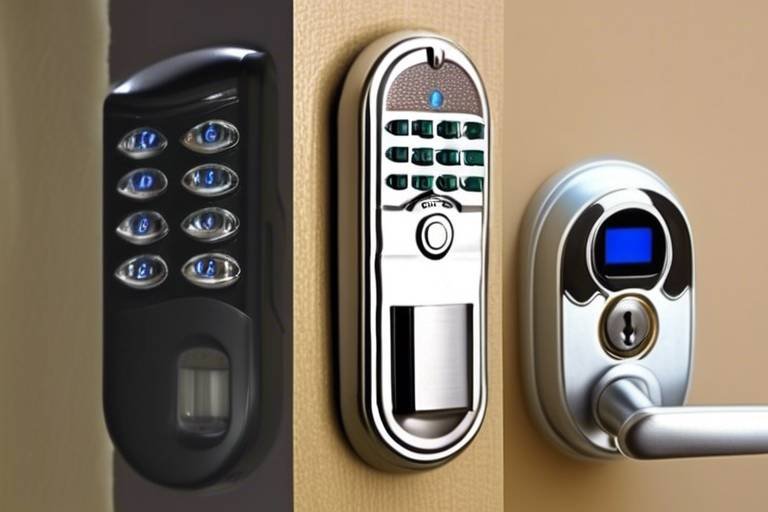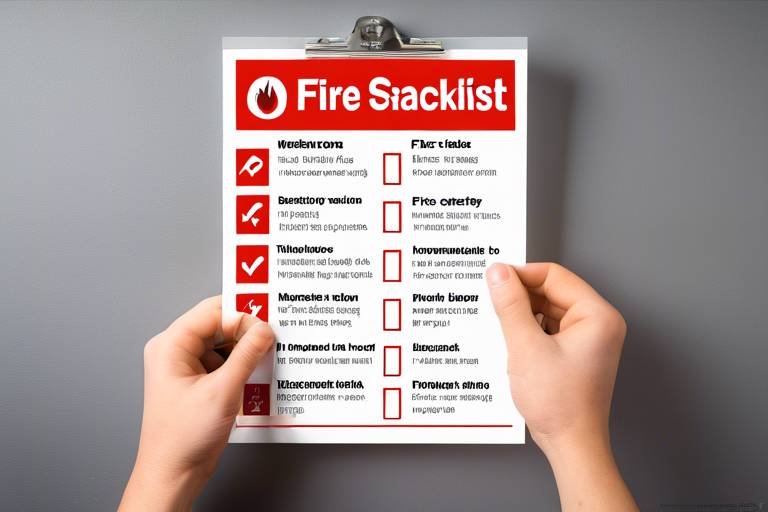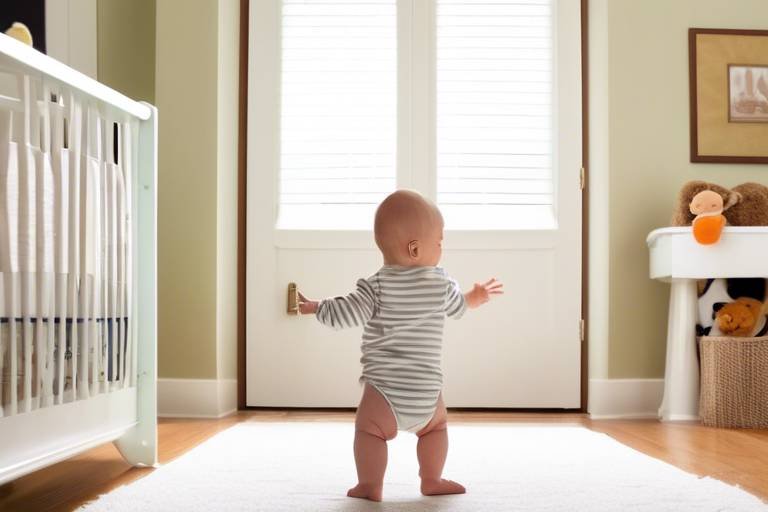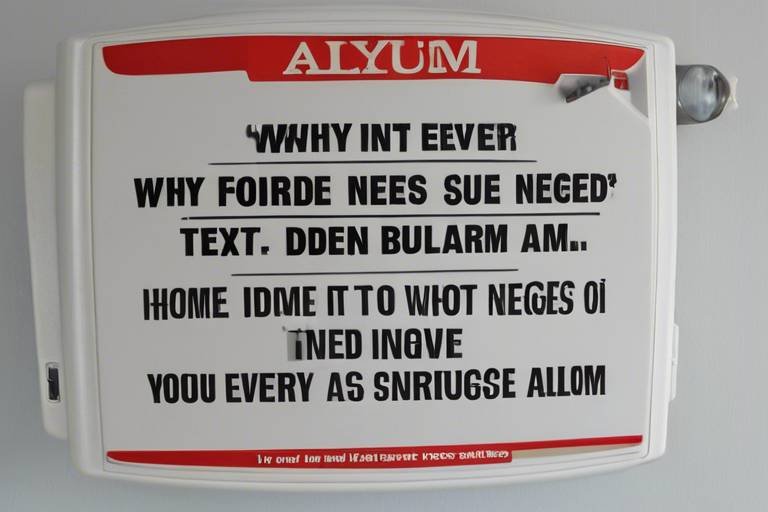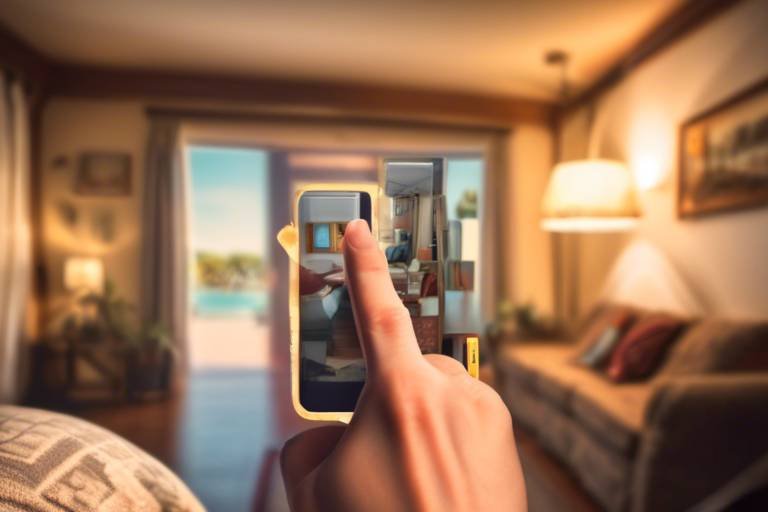Why You Need a Carbon Monoxide Detector at Home
When it comes to home safety, one of the most important yet often overlooked devices is the carbon monoxide detector. Imagine a silent predator lurking in your home, invisible and odorless, waiting to strike. This is precisely what carbon monoxide (CO) is—a colorless, tasteless gas that can seep into your living space without warning. Having a carbon monoxide detector is not just a precaution; it’s a necessity that can save lives. In this article, we’ll delve into the importance of having a carbon monoxide detector, its benefits, and how it works, ensuring you understand why this small device plays a crucial role in your home’s safety.
First, let’s talk about the **benefits** of having a carbon monoxide detector. These devices are designed to alert you when CO levels reach dangerous thresholds, giving you precious time to evacuate and seek help. They are particularly vital in homes with fuel-burning appliances, such as gas stoves, heaters, or fireplaces. Without a CO detector, you might not realize there's a problem until it’s too late. In fact, according to the CDC, over 400 people in the U.S. die from unintentional CO poisoning each year. This statistic alone highlights the importance of being proactive about your safety.
Next, let’s explore how these detectors work. Carbon monoxide detectors typically use one of two technologies: electrochemical sensors or metal oxide semiconductor sensors. The former detects CO by measuring the electrical current generated when the gas interacts with a chemical solution, while the latter detects changes in resistance when CO is present. Both types are effective, but understanding their functionality can help you choose the right one for your home. Placement is also crucial; for maximum effectiveness, detectors should be installed near sleeping areas and on every level of your home.
In summary, a carbon monoxide detector is an essential device that can protect you and your loved ones from the dangers of carbon monoxide exposure. It serves as your first line of defense against this silent killer, providing peace of mind and safety in your home. In the following sections, we will further explore the risks associated with carbon monoxide, the health effects of exposure, and practical tips for installation and maintenance, ensuring you are well-equipped to safeguard your home.
- What is carbon monoxide? Carbon monoxide is a colorless, odorless gas produced by burning fossil fuels. It can be harmful or even fatal when inhaled.
- How often should I replace my carbon monoxide detector? It's recommended to replace your carbon monoxide detector every 5 to 7 years, depending on the manufacturer's guidelines.
- Where should I install my carbon monoxide detector? Install detectors near sleeping areas and on every level of your home, including the basement.
- What should I do if my carbon monoxide detector goes off? Evacuate your home immediately and call emergency services. Do not re-enter until it’s deemed safe.
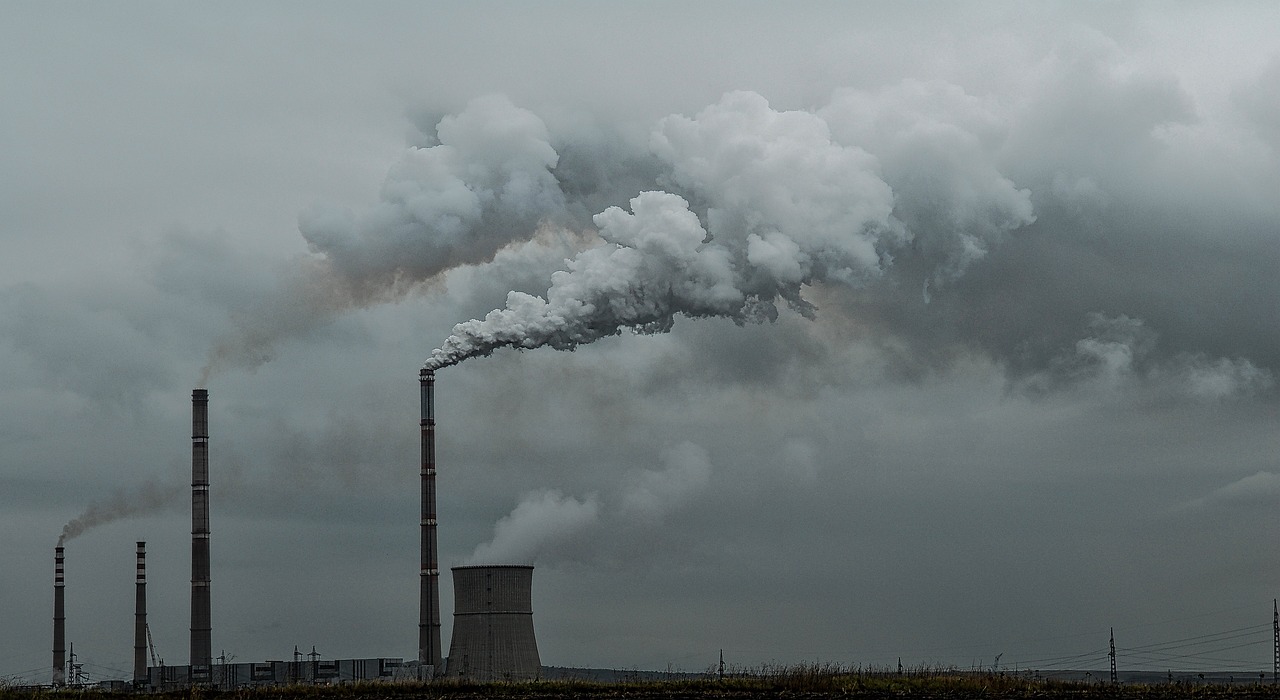
Understanding Carbon Monoxide
Carbon monoxide (CO) is a colorless, odorless, and tasteless gas that can pose a serious threat to your health and safety. It is produced by the incomplete combustion of fossil fuels, which means it can be emitted from various household appliances and vehicles. Imagine a silent assassin lurking in your home, ready to strike without warning. That's carbon monoxide for you! It can come from sources such as gas stoves, fireplaces, water heaters, and even your car if it's running in an enclosed space.
One of the most alarming aspects of carbon monoxide is that it can build up in your home without you even realizing it. Unlike smoke from a fire, which has a distinct smell and visual cues, CO is completely undetectable without a proper detector. This makes it even more crucial to understand the potential sources of carbon monoxide and how it can infiltrate your living space. For instance, if your furnace is malfunctioning or your chimney is blocked, you could be at risk of carbon monoxide poisoning.
To visualize the seriousness of this issue, consider the following common sources of carbon monoxide:
- Gas-powered appliances (stoves, ovens, and heaters)
- Vehicles running in enclosed spaces (like garages)
- Wood-burning stoves and fireplaces
- Gas-powered generators
Every year, thousands of people suffer from carbon monoxide poisoning, leading to serious health complications or even death. It's essential to recognize that everyone is at risk, but certain groups, such as children, the elderly, and those with pre-existing health conditions, are particularly vulnerable. Understanding the sources and risks associated with carbon monoxide is the first step in protecting yourself and your loved ones.
In summary, carbon monoxide is a dangerous gas that can accumulate in your home without your knowledge. By being aware of its sources and understanding the risks involved, you can take proactive measures to safeguard your health. Remember, prevention is always better than cure, so ensure you have a reliable carbon monoxide detector installed and maintain it regularly!

Health Risks of Carbon Monoxide Exposure
When it comes to household safety, one of the most insidious threats is carbon monoxide (CO). This colorless, odorless gas can seep into your home from various sources, such as faulty furnaces, gas stoves, or even your car if it's parked in an attached garage. The danger lies not only in its silent nature but also in the myriad of health risks it poses. Understanding these risks is crucial for protecting yourself and your loved ones.
Carbon monoxide exposure can lead to a range of health issues, primarily because it interferes with the body's ability to transport oxygen. When inhaled, CO binds with hemoglobin in the blood, forming carboxyhemoglobin, which effectively reduces the amount of oxygen that can be delivered to vital organs. This can result in symptoms ranging from mild headaches to severe neurological damage, depending on the level and duration of exposure.
Here are some of the most common symptoms associated with carbon monoxide poisoning:
- Headaches
- Dizziness
- Shortness of breath
- Nausea or vomiting
- Confusion or disorientation
These symptoms can often be mistaken for other illnesses, such as the flu or food poisoning, making it essential to remain vigilant in identifying the potential source of the problem. In fact, many people may not realize they are being exposed to carbon monoxide until it’s too late. This highlights the need for a carbon monoxide detector in every home, acting as an early warning system against this invisible threat.
Understanding the difference between acute and chronic exposure to carbon monoxide is vital for recognizing the risks involved. Acute exposure refers to a sudden, high-level exposure to CO, which can lead to immediate health effects and requires urgent medical attention. Symptoms can escalate quickly, and in severe cases, it can lead to unconsciousness or even death.
On the other hand, chronic exposure occurs over a longer period, typically at lower levels. While it may not produce immediate symptoms, chronic exposure can result in long-term health complications, including persistent headaches, cognitive impairment, and cardiovascular problems. The insidious nature of chronic exposure often makes it harder to diagnose, as the symptoms can be subtle and easily attributed to other health issues.
Some groups are particularly vulnerable to the effects of carbon monoxide exposure. These include:
- Children: Their developing bodies and higher metabolism make them more susceptible to CO poisoning.
- The elderly: Older adults often have pre-existing health conditions that can be exacerbated by CO exposure.
- Individuals with health conditions: Those with respiratory or cardiovascular issues are at greater risk.
Recognizing these vulnerable populations is critical for implementing preventive measures, such as installing carbon monoxide detectors and ensuring proper ventilation in homes.
Long-term exposure to carbon monoxide can lead to serious health complications. Studies have shown that individuals who have suffered from CO poisoning may experience lasting effects, such as:
- Neurological damage, including memory loss and cognitive deficits
- Cardiovascular issues, which can increase the risk of heart disease
- Respiratory problems, particularly in those with pre-existing conditions
Given these potential long-term impacts, it becomes even more critical to prioritize prevention and detection. Regularly checking your carbon monoxide detectors and being aware of the symptoms can save lives and prevent irreversible damage.
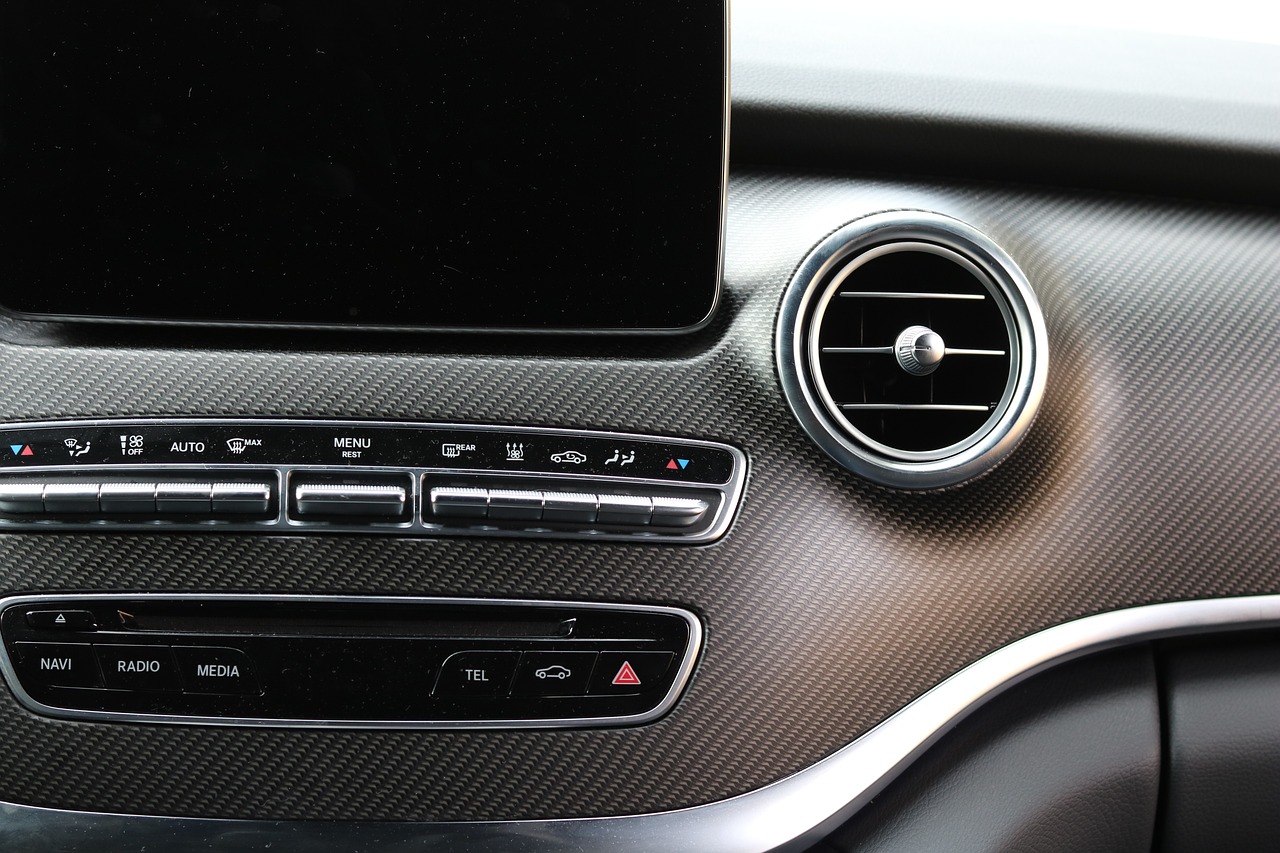
Symptoms of Carbon Monoxide Poisoning
Carbon monoxide poisoning is often referred to as the "silent killer" because it can occur without any warning signs. The symptoms can easily be mistaken for other illnesses, making it crucial to be aware of what to look for. Initially, you might experience mild symptoms that can escalate quickly. Common early signs include:
- Headache: Often described as a dull ache, this is one of the first symptoms people notice.
- Dizziness: A feeling of lightheadedness or unsteadiness can occur, making it difficult to maintain balance.
- Nausea: You might feel queasy or even vomit, which can be alarming, especially if you can't pinpoint the cause.
- Shortness of Breath: Difficulty breathing may arise, particularly during physical activity.
- Fatigue: An overwhelming feeling of tiredness that doesn't go away with rest can be a sign of exposure.
As exposure continues, symptoms can worsen significantly. You may experience:
- Confusion: Cognitive functions can become impaired, leading to disorientation.
- Loss of Consciousness: In severe cases, individuals may faint or become unconscious.
- Chest Pain: This can mimic a heart attack, adding to the confusion and urgency of the situation.
It's important to note that the severity of symptoms can vary based on the level of exposure and the individual’s health status. For instance, children and the elderly may exhibit symptoms more quickly and severely than otherwise healthy adults. If you suspect carbon monoxide poisoning, it is vital to act immediately. Move to fresh air and seek medical attention as soon as possible. Remember, carbon monoxide is colorless and odorless, making detection without a proper device nearly impossible.
In summary, being aware of these symptoms can save lives. Regularly checking your carbon monoxide detectors and understanding how to respond to these symptoms are essential steps in keeping your home and loved ones safe.
Q: How can I tell if my carbon monoxide detector is working?
A: Most detectors have a test button that you can press to ensure they are functioning properly. It's advisable to test them monthly and replace batteries at least once a year.
Q: What should I do if my carbon monoxide detector goes off?
A: Immediately evacuate the premises and call emergency services. Do not re-enter until it has been deemed safe by professionals.
Q: Can I rely solely on my carbon monoxide detector for safety?
A: While detectors are essential, they should be part of a broader safety plan that includes regular maintenance of appliances and proper ventilation in your home.

Acute vs. Chronic Exposure
When it comes to carbon monoxide (CO) exposure, understanding the difference between acute and chronic exposure is crucial for safeguarding your health. Acute exposure refers to a short-term exposure to high levels of carbon monoxide, which can occur in situations like a faulty furnace or a car left running in an enclosed space. This type of exposure can lead to rapid onset of symptoms, making it a dangerous scenario. Imagine breathing in a toxic cloud that can incapacitate you within minutes—this is the reality of acute carbon monoxide poisoning.
On the other hand, chronic exposure is characterized by long-term exposure to lower levels of carbon monoxide over an extended period. This can happen in homes with poorly ventilated gas appliances or during the winter months when heating systems are frequently in use. The symptoms of chronic exposure can be subtle and may mimic other illnesses, leading to a delayed diagnosis. Think of it like a slow leak in a tire; you may not notice it right away, but over time, it can lead to significant problems.
To clarify these differences, let's break it down:
| Type of Exposure | Description | Symptoms |
|---|---|---|
| Acute Exposure | Short-term exposure to high levels of CO | Dizziness, confusion, headache, nausea, unconsciousness |
| Chronic Exposure | Long-term exposure to lower levels of CO | Fatigue, headaches, impaired coordination, memory problems |
Each type of exposure poses its own set of risks, but both can have serious consequences. Acute exposure can lead to immediate health crises, while chronic exposure can cause long-term damage to your health. Vulnerable populations, such as children and the elderly, are particularly at risk for both types of exposure, making it all the more important to have a reliable carbon monoxide detector installed in your home.
In conclusion, whether you're facing acute or chronic exposure, the key takeaway is that carbon monoxide is a silent threat that can have devastating effects on your health. Awareness and prevention are your best allies in combating this invisible enemy.
- What should I do if my carbon monoxide detector goes off? If your detector alerts you, immediately evacuate the premises and call emergency services. Do not re-enter until it is deemed safe.
- How often should I replace my carbon monoxide detector? It's recommended to replace your CO detector every 5 to 7 years, depending on the manufacturer's guidelines.
- Can carbon monoxide detectors be tested? Yes, most detectors have a test button that you can press to ensure they are functioning correctly. Regular testing is essential.

Vulnerable Populations
When it comes to carbon monoxide (CO) exposure, not everyone is equally at risk. Certain groups of people are more vulnerable to the harmful effects of this silent killer. Understanding who these vulnerable populations are is crucial for ensuring safety in your home. For instance, children are particularly susceptible because their bodies are still developing, and they breathe more air relative to their size than adults do. This means that even low levels of carbon monoxide can have a more profound impact on their health.
Similarly, the elderly are at heightened risk. With age, the body's ability to detect and respond to carbon monoxide exposure diminishes, making it harder for them to recognize symptoms. Additionally, many elderly individuals may have pre-existing health conditions that can be exacerbated by CO exposure, such as heart disease or respiratory issues. This combination can turn a seemingly minor exposure into a serious health threat.
Another group that requires special attention is those with pre-existing health conditions. Individuals suffering from chronic illnesses, such as asthma or chronic obstructive pulmonary disease (COPD), may experience more severe symptoms when exposed to carbon monoxide. Their compromised pulmonary function means that their bodies cannot efficiently handle the additional stress caused by CO inhalation.
Moreover, pregnant women should also be considered a vulnerable population. Exposure to carbon monoxide can affect fetal development, potentially leading to complications such as low birth weight or developmental issues. Therefore, it is imperative for pregnant women to ensure that their living environments are free from this dangerous gas.
To summarize, the following groups are particularly vulnerable to the effects of carbon monoxide:
- Children
- Elderly
- Individuals with pre-existing health conditions
- Pregnant women
By recognizing these vulnerable populations, we can take proactive steps to protect them. Installing carbon monoxide detectors, ensuring proper ventilation, and conducting regular maintenance checks on fuel-burning appliances can help mitigate the risks associated with carbon monoxide exposure. Remember, awareness is the first step toward prevention, and safeguarding those at higher risk is a responsibility we all share.
1. What are the symptoms of carbon monoxide poisoning?
Symptoms can include headache, dizziness, weakness, nausea, vomiting, chest pain, and confusion. In severe cases, it can lead to loss of consciousness or even death.
2. How often should I test my carbon monoxide detector?
It is recommended to test your carbon monoxide detector at least once a month to ensure it is functioning properly.
3. Where should I place my carbon monoxide detector?
Install detectors near sleeping areas and on every level of your home, especially near bedrooms, to ensure you can hear the alarm while you sleep.
4. Can I use a smoke detector instead of a carbon monoxide detector?
No, smoke detectors and carbon monoxide detectors serve different purposes. It's best to have both types of detectors installed in your home for optimal safety.

Long-Term Health Effects
When it comes to carbon monoxide (CO) exposure, the immediate dangers are often highlighted, but the long-term health effects can be just as concerning, if not more so. Imagine a thief in the night, silently invading your home, stealing your breath, and leaving you with lingering health issues that might not surface until much later. This is the reality of prolonged exposure to this insidious gas. Over time, even low levels of carbon monoxide can lead to significant health complications.
One of the most alarming long-term effects of carbon monoxide exposure is the potential for neurological damage. Studies have shown that individuals who experience even mild poisoning can suffer from cognitive deficits, affecting memory, attention, and problem-solving skills. This is particularly troubling because these symptoms can be subtle and easily mistaken for normal aging or other health conditions. For instance, a person might shrug off forgetfulness as just a part of life, not realizing that it could be a lingering effect of CO exposure.
Moreover, individuals with pre-existing health conditions, such as heart disease, may find that carbon monoxide exacerbates their symptoms. Chronic exposure can lead to a decline in heart function, increasing the risk of heart attacks and other cardiovascular issues. The connection between CO exposure and heart health is like a shadow that grows darker over time, slowly but surely affecting your overall well-being.
In addition to neurological and cardiovascular effects, long-term exposure can also result in respiratory problems. The lungs, already burdened by pollutants and allergens, may struggle to cope with the additional stress of carbon monoxide. This can lead to chronic conditions such as asthma or other pulmonary diseases, making it crucial to maintain a safe environment free from this toxic gas.
To put it simply, the long-term health effects of carbon monoxide exposure can be likened to a slow leak in a tire. At first, you might not notice anything amiss, but over time, the pressure drops, and eventually, you find yourself in a precarious situation. Therefore, prevention is key. Installing carbon monoxide detectors and ensuring they are functional can save you from the long-term consequences of this silent killer.
In summary, the long-term effects of carbon monoxide exposure are serious and multifaceted. They can impact your brain, heart, and lungs, leading to a cascade of health issues that can diminish your quality of life. Being proactive about detection and prevention is essential for safeguarding your health and that of your loved ones.
- What are the symptoms of long-term carbon monoxide exposure? Symptoms can include memory issues, fatigue, headaches, and difficulty concentrating.
- How can I prevent carbon monoxide exposure in my home? Regular maintenance of fuel-burning appliances, proper ventilation, and installing carbon monoxide detectors are key preventive measures.
- Is carbon monoxide exposure reversible? Some effects may improve over time with removal from the source, but neurological damage can sometimes be permanent.
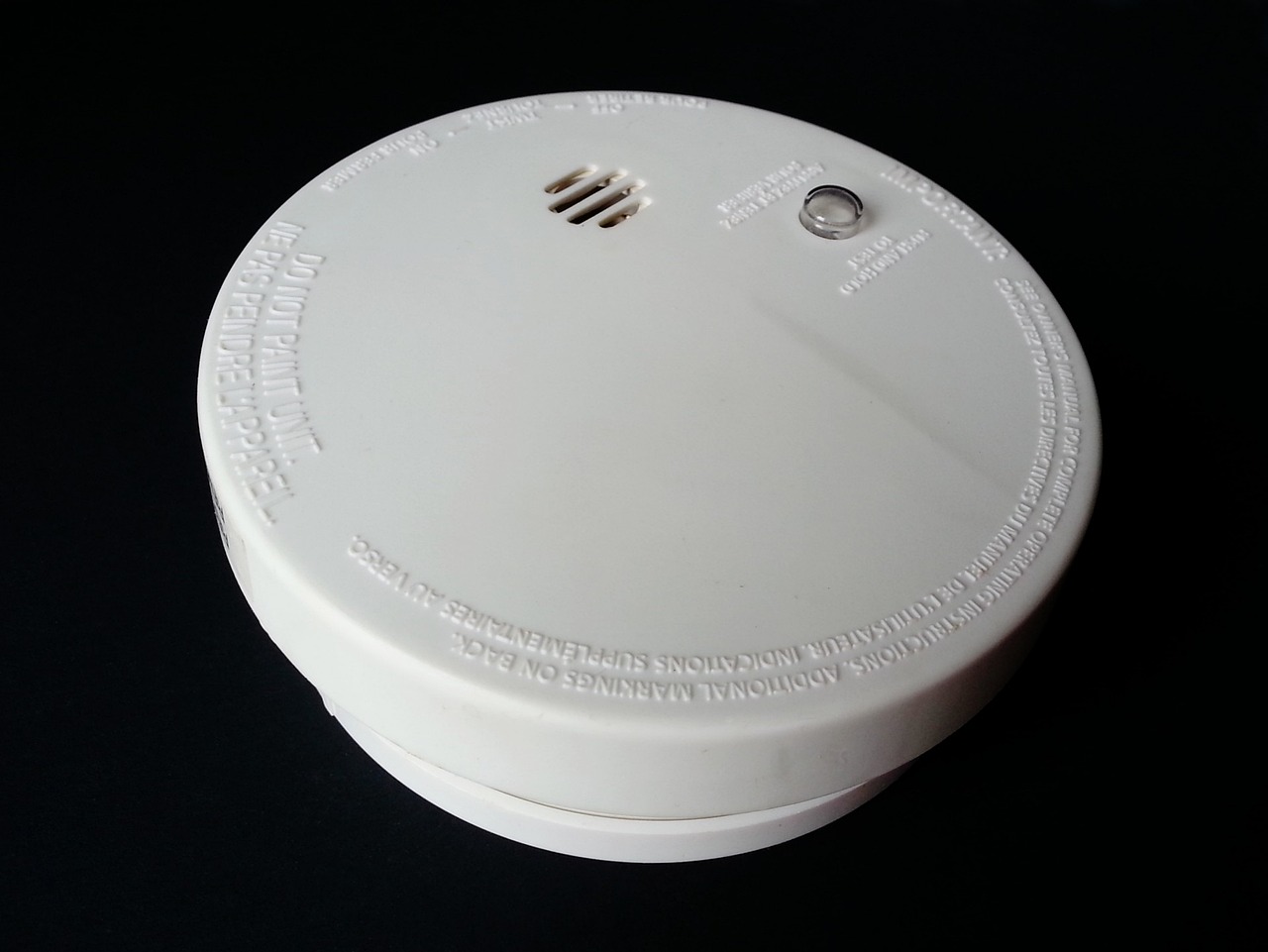
Importance of Carbon Monoxide Detectors
When it comes to protecting your home and loved ones, a carbon monoxide detector is not just a luxury—it's a necessity. This small device can be a literal lifesaver, alerting you to the presence of carbon monoxide (CO) before it becomes a serious threat. Imagine waking up in the middle of the night to your detector's piercing alarm, warning you of an unseen danger. It's the kind of wake-up call that you want, right? The reality is that carbon monoxide is a silent killer, and having a detector in place is your first line of defense against this colorless, odorless gas.
So, why are these detectors so critical? First off, they provide an early warning system. When you consider that CO can build up in your home due to faulty appliances, blocked chimneys, or poor ventilation, the importance of early detection becomes crystal clear. According to the Centers for Disease Control and Prevention (CDC), hundreds of people die each year from unintentional CO poisoning, with many more experiencing serious health issues. By installing a detector, you significantly reduce your risk of being part of that statistic.
Furthermore, carbon monoxide detectors are incredibly easy to use and maintain. Most modern detectors are equipped with features like digital displays, voice alerts, and even smart technology that connects to your smartphone. This means that you can receive alerts wherever you are, providing peace of mind even when you’re away from home. The convenience of these devices cannot be overstated; they are designed to fit seamlessly into your life. Just think of them as the watchful guardian of your home, always on duty, always alert.
In addition to their life-saving capabilities, carbon monoxide detectors can also help you save money in the long run. By identifying CO leaks early, you can address issues with your heating systems or appliances before they escalate into costly repairs or replacements. It’s like having an insurance policy for your home’s safety—one that not only protects your family but also your wallet.
Lastly, let’s not forget about the peace of mind that comes with knowing you’ve taken proactive steps to safeguard your family. Installing a carbon monoxide detector is a simple yet powerful action that demonstrates your commitment to your loved ones’ safety. It’s a small investment for a significant return in terms of health and security. So, if you haven’t already, make it a priority to install a carbon monoxide detector in your home. It’s an essential component of any comprehensive home safety plan.
- How often should I test my carbon monoxide detector?
It's recommended to test your detector at least once a month to ensure it’s functioning properly. - Where should I place my carbon monoxide detector?
Install detectors on every level of your home, especially near sleeping areas, to maximize safety. - What should I do if my carbon monoxide detector goes off?
If your detector alarms, evacuate your home immediately and call emergency services to investigate.

How Carbon Monoxide Detectors Work
Carbon monoxide detectors are essential devices designed to keep you and your loved ones safe from the dangers of this invisible and odorless gas. But how do these remarkable gadgets actually work? At their core, carbon monoxide detectors employ advanced sensing technology to detect the presence of carbon monoxide (CO) in your home. Most detectors use one of two main methods: electrochemical sensors or metal oxide semiconductor sensors.
Electrochemical sensors are the most common type found in residential detectors. They consist of electrodes immersed in a chemical solution. When carbon monoxide enters the sensor, it reacts with the chemicals, producing a small electric current. This current is then measured and analyzed by the detector's circuitry, which triggers an alarm if CO levels exceed safe thresholds. This method is highly sensitive and can detect low concentrations of carbon monoxide, making it ideal for home use.
On the other hand, metal oxide semiconductor sensors work by utilizing a heated semiconductor that reacts with carbon monoxide. When CO comes into contact with the sensor, it lowers the resistance of the semiconductor, which is then detected and converted into an electrical signal. While these sensors are effective, they tend to be less sensitive to low levels of CO compared to electrochemical sensors.
Regardless of the type, the placement of your carbon monoxide detector is crucial for its effectiveness. Ideally, detectors should be installed on every level of your home, particularly near sleeping areas, as this is where you are most vulnerable during the night. Some detectors are even designed to be hardwired into your home’s electrical system, providing an uninterrupted power source. However, battery-operated models are also available, which can be placed in locations where wiring is impractical.
It's important to note that carbon monoxide detectors are not foolproof. They require regular maintenance to ensure they function correctly. This includes testing the alarm monthly and replacing the batteries at least once a year, or sooner if the low battery alert sounds. Many modern detectors also come equipped with digital displays that show current CO levels, making it easier for you to monitor air quality in your home.
In summary, understanding how carbon monoxide detectors work is vital in ensuring your safety. By knowing the technology behind these devices and the importance of proper placement and maintenance, you can significantly reduce the risk of CO poisoning in your home. Remember, a reliable carbon monoxide detector is your first line of defense against this silent killer.
- How often should I test my carbon monoxide detector? It’s recommended to test your detector at least once a month.
- What should I do if my carbon monoxide detector goes off? Evacuate your home immediately and call emergency services.
- How long do carbon monoxide detectors last? Most detectors have a lifespan of 5 to 7 years; check the manufacturer's recommendations.
- Can I use a smoke detector instead of a carbon monoxide detector? No, they serve different purposes and should be used together for comprehensive safety.

Types of Carbon Monoxide Detectors
When it comes to safeguarding your home against the silent threat of carbon monoxide (CO), understanding the different types of carbon monoxide detectors available is essential. These devices are your first line of defense, alerting you to the presence of this dangerous gas before it can cause harm. There are several types of detectors, each with its own unique features and benefits. Let's dive into the most common types:
One popular option is the plug-in carbon monoxide detector. This type is incredibly convenient, as you can simply plug it into any standard electrical outlet. Many of these models come with battery backup, ensuring that they continue to function even during a power outage. However, it's crucial to place them in areas where they can effectively monitor the air quality, such as near sleeping areas or common living spaces.
Another widely used type is the battery-operated carbon monoxide detector. These detectors are highly portable and can be installed anywhere in your home without the need for electrical outlets. This makes them an excellent choice for areas like garages or basements where power sources may be limited. Just remember to check the batteries regularly, as a dead battery renders the device ineffective.
Some homeowners opt for hardwired carbon monoxide detectors. These devices are directly connected to your home's electrical system, providing a reliable and continuous power source. Many hardwired models also include a battery backup, ensuring they remain operational during outages. The downside? Installation can be a bit more complex, often requiring a professional electrician to ensure everything is up to code.
For those looking for added functionality, combination smoke and carbon monoxide detectors are a fantastic option. These devices serve dual purposes, detecting both smoke and carbon monoxide, which can be particularly beneficial in maximizing safety in your home. They can be either battery-operated or hardwired, providing flexibility based on your needs. However, make sure to choose a reputable brand that meets safety standards to ensure both functions work effectively.
In addition to these common types, there are also smart carbon monoxide detectors that connect to your home Wi-Fi network. These advanced models can send alerts directly to your smartphone, allowing you to monitor your home’s safety even when you’re away. They often come with additional features, such as voice alerts and integration with other smart home devices. While they may be pricier, the peace of mind they provide can be well worth the investment.
To summarize, here’s a quick comparison of the types of carbon monoxide detectors:
| Type | Power Source | Features |
|---|---|---|
| Plug-in | Electrical outlet | Battery backup, easy installation |
| Battery-operated | Battery | Portable, no wiring needed |
| Hardwired | Electrical system | Reliable power, may require professional installation |
| Combination (Smoke & CO) | Battery or hardwired | Dual detection, space-saving |
| Smart | Wi-Fi | Remote alerts, advanced features |
In conclusion, selecting the right type of carbon monoxide detector for your home is crucial for ensuring the safety of your family. Each type has its own advantages, so consider your specific needs, the layout of your home, and your budget when making a choice. Remember, the best detector is one that you will actually use and maintain properly!
- How often should I test my carbon monoxide detector? It's recommended to test your detector at least once a month to ensure it's functioning correctly.
- Where should I place my carbon monoxide detector? Install detectors outside sleeping areas and on each level of your home, especially near potential sources of CO.
- How long do carbon monoxide detectors last? Most detectors have a lifespan of 5 to 7 years. Check the manufacturer's guidelines for specific information.
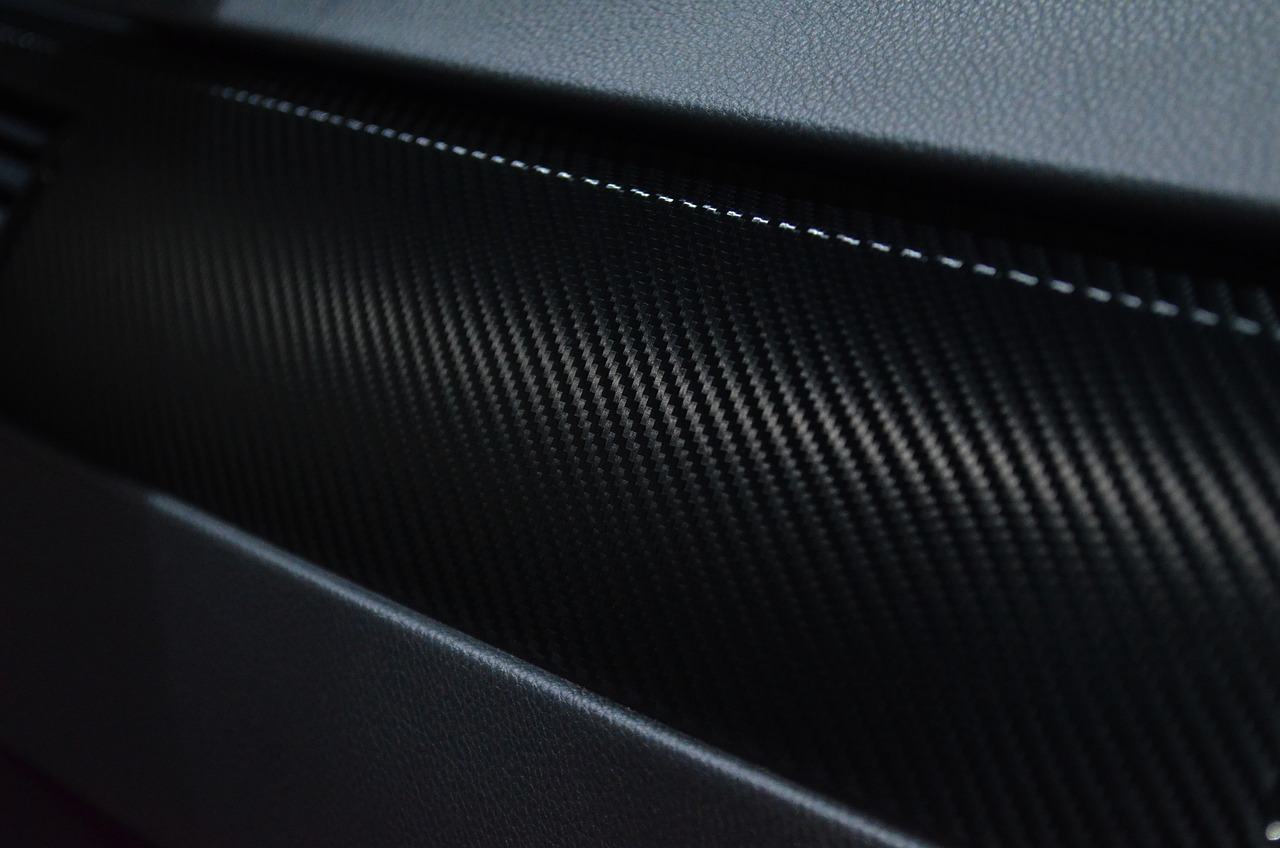
Installation and Maintenance Tips
Installing a carbon monoxide detector in your home is not just a good idea; it’s a **necessity** for ensuring the safety of you and your loved ones. When it comes to installation, you want to make sure that you place the detector in the right spots. Ideally, carbon monoxide detectors should be installed on every level of your home, especially near sleeping areas. This way, if there’s ever a leak, you’ll have the best chance of being alerted before it’s too late. Think of it like a **guardian angel** watching over you while you sleep.
When it comes to the actual installation, follow the manufacturer’s instructions carefully. Most detectors can be mounted on the wall or ceiling, but if you’re unsure, a quick read through the manual will clarify any doubts. Remember, the detector should be at least 15 feet away from any fuel-burning appliances to avoid false alarms. It’s like giving your detector some personal space to do its job effectively!
Once your detectors are installed, maintenance is key to keeping them functional. Just like a car needs regular oil changes, your carbon monoxide detector needs some attention too. Regularly testing your detector is crucial. Most models come with a test button, which you should press at least once a month to ensure it’s working properly. If the alarm doesn’t sound, it’s time to replace the batteries or the entire unit, depending on its age. Typically, detectors should be replaced every 5 to 7 years. Keeping a calendar reminder can be a handy way to remember this!
In addition to testing, keep an eye on the batteries. Some detectors come with a **non-replaceable battery** that lasts for the life of the unit, while others require battery changes. If you have the latter, make it a habit to change the batteries at least twice a year. A good rule of thumb is to do it when you change your clocks for Daylight Saving Time. This way, you’ll always remember!
Here’s a quick summary of essential installation and maintenance tips:
| Task | Frequency |
|---|---|
| Test the Detector | Monthly |
| Replace Batteries | Every 6 months |
| Replace Detector | Every 5-7 years |
Finally, don’t forget to educate your family about the sound of the alarm. It’s important that everyone knows what to do if the alarm goes off. Practice a fire drill that includes a plan for what to do in case of a carbon monoxide alert. After all, safety is a team effort!
- How do I know if my carbon monoxide detector is working? Regularly press the test button on your detector. If it beeps, it’s functioning properly!
- Can I install a carbon monoxide detector myself? Yes! Most detectors are easy to install with basic tools, but always follow the manufacturer’s instructions.
- What should I do if my carbon monoxide detector goes off? Immediately evacuate your home, call emergency services, and do not re-enter until it’s deemed safe.

Optimal Placement of Detectors
When it comes to ensuring your home is safe from the dangers of carbon monoxide, the placement of your detectors is crucial. You can think of carbon monoxide detectors as the sentinels of your home, standing guard against a threat that is both invisible and odorless. But where exactly should these guardians be stationed to provide the best protection? Let's break it down!
First and foremost, you should install a carbon monoxide detector on every level of your home, particularly near sleeping areas. This is vital because, in the event of a leak, the earlier you’re alerted, the better your chances of escaping harm. Imagine waking up to a beeping sound that could save your life!
It's also important to consider the specific locations within your home. Here are some optimal spots to consider:
- Near sleeping areas: Place detectors in hallways or just outside bedrooms, ensuring that the sound can wake you if you're asleep.
- Living areas: Install detectors in common areas where you spend a lot of time, such as the living room or family room.
- Near fuel-burning appliances: If you have a furnace, water heater, or gas stove, position a detector within 10-15 feet of these appliances to catch any leaks early.
However, it's not just about where you place them; it's also about how high you mount them. Carbon monoxide is slightly lighter than air, so while it will rise, it's best to install detectors at least 5 feet off the ground. This height allows for optimal detection without interference from furniture or other obstructions.
Now, let’s talk about avoiding common pitfalls. Never place a carbon monoxide detector too close to your fuel-burning appliances. This could lead to false alarms, which might cause you to ignore the detector when it truly matters. Additionally, avoid placing them in areas with high humidity, like bathrooms, as moisture can affect their functionality.
While it might seem like a small detail, the placement of your carbon monoxide detectors can make a significant difference in your safety. Just as you wouldn’t leave your front door unlocked, don’t underestimate the importance of strategically placing these life-saving devices.
Q: How many carbon monoxide detectors do I need in my home?
A: It's recommended to have at least one detector on each level of your home, especially near sleeping areas.
Q: Can I use a combination smoke and carbon monoxide detector?
A: Yes, combination detectors can be convenient, but ensure they meet safety standards and are installed properly.
Q: How often should I test my carbon monoxide detector?
A: You should test your detectors monthly and replace the batteries at least once a year or whenever you hear the low-battery warning.
Q: What should I do if my carbon monoxide detector goes off?
A: Immediately evacuate your home and call emergency services. Do not re-enter until it has been deemed safe.

Regular Testing and Battery Replacement
When it comes to keeping your home safe from the silent threat of carbon monoxide, regular testing and battery replacement of your carbon monoxide detector are absolutely crucial. Think of it like maintaining a car; if you neglect the oil changes and tire checks, you might find yourself stranded on the side of the road. Similarly, if you ignore your detector, you could be putting your family at risk. So, how often should you be testing your detector? The general recommendation is to test it at least once a month. This simple act can ensure that your device is functioning correctly and ready to alert you at the first sign of danger.
When testing your carbon monoxide detector, you should press the test button, which is usually located on the front of the unit. If you hear a loud beep, congratulations! Your detector is working as it should. If there’s no sound, it’s time to check the batteries. Speaking of batteries, replacing them is equally important. Most detectors require a battery change at least once a year, but some newer models come equipped with long-life batteries that can last up to 10 years. However, it’s still a good idea to check them regularly.
Here’s a handy tip: consider marking your calendar or setting a reminder on your phone to do these checks. It’s easy to forget, especially amidst the hustle and bustle of daily life. You might also want to keep a log of when you test your detectors and replace the batteries. This can help you stay on top of maintenance and ensure your family’s safety.
Also, don’t forget that some carbon monoxide detectors come with a built-in expiration date. Yes, these devices don’t last forever! Typically, they should be replaced every 5 to 7 years, depending on the manufacturer’s guidelines. Check the back of your unit for the manufacturing date and make a note of when it’s time for a replacement. Ignoring this can lead to false alarms or, worse, a failure to detect dangerous levels of carbon monoxide.
In summary, regular testing and battery replacement are essential practices that can save lives. By treating your carbon monoxide detector with the same care you would give to any other safety device in your home, you can ensure that it remains a reliable guardian against this invisible, odorless threat.
- How often should I test my carbon monoxide detector? It is recommended to test your detector at least once a month.
- When should I replace the batteries in my carbon monoxide detector? Batteries should be replaced at least once a year, or as indicated by the manufacturer.
- How long does a carbon monoxide detector last? Most detectors should be replaced every 5 to 7 years, depending on the manufacturer's guidelines.
- What should I do if my carbon monoxide detector goes off? Evacuate your home immediately and call emergency services. Do not re-enter until it has been deemed safe.
Frequently Asked Questions
- What is carbon monoxide and why is it dangerous?
Carbon monoxide (CO) is a colorless, odorless gas produced by burning fossil fuels. It's dangerous because it can build up in enclosed spaces, leading to poisoning. Even small amounts can be harmful, and high levels can be fatal, making it essential to have a detector in your home.
- How does a carbon monoxide detector work?
A carbon monoxide detector works by sensing the presence of CO in the air. It uses either electrochemical sensors or metal oxide semiconductor technology to detect the gas. When CO levels reach a certain threshold, the alarm triggers, alerting you to potential danger.
- Where should I install carbon monoxide detectors in my home?
You should install carbon monoxide detectors on every level of your home, especially near sleeping areas. It's also wise to place them near potential sources of CO, like furnaces, stoves, or fireplaces, to ensure maximum safety.
- How often should I test my carbon monoxide detector?
It's recommended to test your carbon monoxide detector at least once a month. Regular testing ensures that the device is functioning correctly and can alert you in case of a CO leak.
- What are the symptoms of carbon monoxide poisoning?
Symptoms of carbon monoxide poisoning can include headache, dizziness, weakness, nausea, and confusion. These symptoms can easily be mistaken for other illnesses, which is why having a detector is crucial for safety.
- How often should I replace the batteries in my carbon monoxide detector?
You should replace the batteries in your carbon monoxide detector at least once a year. However, if your detector starts beeping or chirping, it may indicate low battery power and should be replaced immediately.
- Can I use a combination smoke and carbon monoxide detector?
Yes, combination smoke and carbon monoxide detectors are available and can be an efficient way to monitor both threats in your home. Just ensure that the device meets safety standards and is installed correctly.
- What should I do if my carbon monoxide detector goes off?
If your carbon monoxide detector goes off, treat it as a serious emergency. Immediately evacuate everyone from the home and call emergency services. Do not re-enter the home until it has been deemed safe by professionals.




